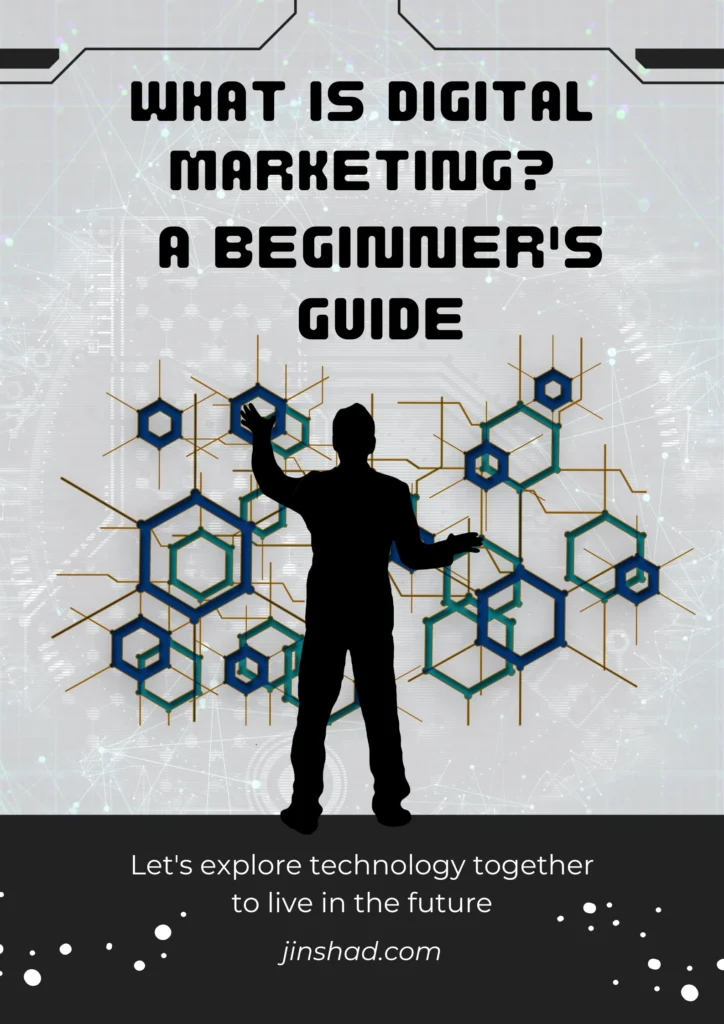Contents
What Is Digital Marketing?
Using digital channels including the internet, social media, search engines, email, and mobile apps to promote goods, services, or brands is known as digital marketing. It helps companies to connect with potential clients online, where they spend the majority of their time.
It’s an effective strategy for companies of all sizes to connect with a worldwide audience, interact with them directly, and create enduring client connections.
Why Is Digital Marketing Important?
Wider Reach: Connect with a worldwide audience from anywhere.
Cost-effective: less expensive than traditional marketing techniques.
Measurable: Use tools like Google Analytics to monitor campaigns in real time.
Targeted marketing: focuses on certain places, behaviors, or demographics.
High Engagement: Communicate with clients immediately through chatbots, social media, etc.
Better ROI: Returns on investment are increased by efficient targeting and tailoring.
Types of Digital Marketing
1. Search Engine Optimization (SEO)
optimizing your website to rank higher in search engines like Google,Bing and Yahoo
– focus on keywords, backlinks, meta tags, page speed, and content quality.
– Obtaining natural (unpaid) search engine traffic is the aim.
“Search Engine Optimization (SEO) is a crucial part of digital marketing. Learn more about why SEO still matters in 2025.”
2. Social Media Marketing (SMM)
The use of social media platforms like YouTube, Facebook, Instagram, LinkedIn, and X (Twitter) to interact with audiences, build brand awareness, and increase traffic or sales is known as social media marketing (SMM).
-Excellent for customer interaction, awareness, and engagement.
– Paid advertisements are also common here.
3. Search Engine Marketing (SEM) / Pay-Per-Click (PPC)
Running paid ads on digital platforms or search engines (Google Ads)
-Highly tailored advertisements provide instant visibility.
-You pay for each impression or click.
4. Content Marketing
Content marketing is a strategy of creating and sharing useful, relevant content (like blogs, videos, or social media posts)
To attract and involve a particular audience in order to build trust and encourage consumer action, such a purchase or sign-up.
-Includes videos, infographics, podcast, blogs, and more.
-Builds authority and trust.
5. Email Marketing
Email marketing is the method of sending messages to a group of individuals by email, usually with the goal of promoting products, providing updates, or developing connections with customers.
-Used to develop leads, make offers, provide product updates, and retain customers.
-Tools: ConvertKit, Mailchimp, etc.
6. Affiliate Marketing
Partnering with individuals or companies to market your product and earn a commission on sales.
-Based on performance.
-It’s popular among bloggers, influencers, and niche marketers.
7. Influencer Marketing
partnering with influencers to market products or services to their audiences.
-Perfect for brand reach and trust.
-Performs well on Instagram, YouTube, and Twitter.
8. Mobile Marketing
utilizing push notifications, SMS, apps, or mobile-friendly websites to reach users on their mobile devices.
Tools Used in Digital Marketing
- Google Analytics : Tracks website traffic.
- Meta Ads Manager : Manage Facebook and Instagram ads.
- SEMRush / Ahrefs : SEO tools for keyword research and site audits.
- Canva : Create graphics for social media and ads.
- Mailchimp / ConvertKit – Email marketing platforms.
- HubSpot – CRM and inbound marketing suite.
Advantages of Digital Marketing
- Two-way customer connection.
– Customized experiences based on user behavior and data
– Automation and AI tools simplify repetitive tasks.
– Real-time performance tracking.
Challenges of Digital Marketing
- Algorithms and trends are always changing.
- High levels of saturation and competitiveness.
- Controlling user consent and data privacy.
- Continuous learning and upskilling are necessary.
“If you’re ready to take the next step, here’s a guide to a digital marketing strategy that actually works.”
